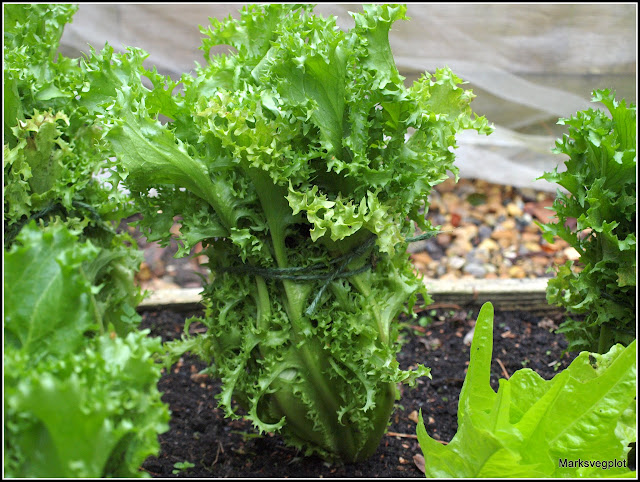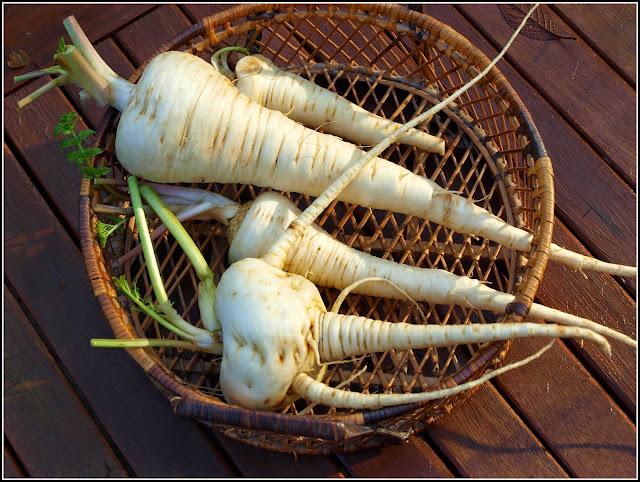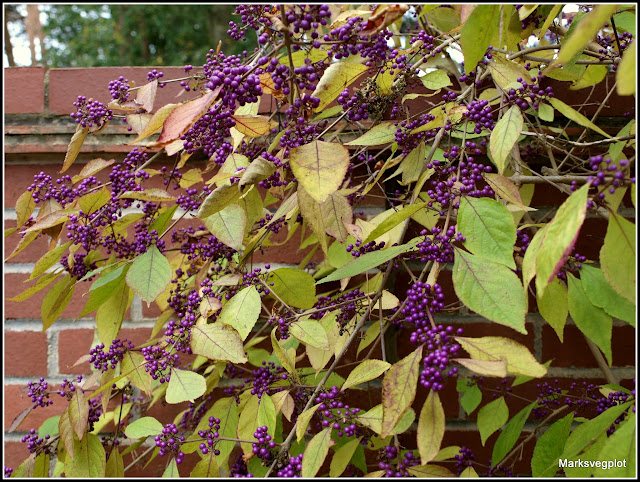I'm still harvesting ripe chillis. This little basket has in it one egg-shaped Rocoto, and a few each of "Ring of Fire" (the fatter ones) and "Turkey Small Red".
This basket has two "Devil's Tongue, Chocolate", two of the unidentified Panamanian Habaneros (the pointy ones, top left), and a few ordinary Red Habaneros, mostly very small, but including two decent-sized ones.
I'm particularly glad to get ripe fruit from those Panamanian chillis. I didn't think any of them would make it to maturity, but once I brought the plant inside, it came on very rapidly. There are lots more fruits, but they are tiny and green. I wonder whether they will continue to grow?
The "Boltardy" Beetroot is still going strong. The rate of growth has slowed down a lot - it's almost at Stop now, but there always seem to be some there when I want some.
I'm still picking Lettuce. The ones I sowed in mid-August grew very slowly and are still tiny. I had to pick three to make a 2-person salad!
 |
| Dubacek, Tom Thumb, Little Gem. |
Our salad was augmented by the first Endive of the year:
This one is not fully mature, and it has not been tied for blanching, but even so, there were some lovely pale leaves in the middle.
Don't ask me what variety it is, because it comes from a batch of 8 mixed varieties!
I picked the last batch of beans for this year, a mere 75g:
That is definitely the last batch, because I have now cut down and composted the plants.
A few more chilli plants have gone the same way - but not before I harvested the last of their fruit.
Seen in more detail below are 3 curved red "Cayenne Thick", 5 of the contorted "Lucifer's Dream, Red" (top left), 4 "Piment d'Espelette" (bottom right), and one solitary "Nigel's Outdoor" (bottom left, just showing some red).
I think most of these will colour-up pretty quick now that they're in the warm.
Of course there was the usual batch of carrots:
They were the usual mix of "tiddlers", and OK ones. This time there was only one wonky one.
That's my harvest for this week. I'm linking my post to Harvest Monday over on Our Happy Acres, so why not drop by and see what other people have been harvesting?



















































